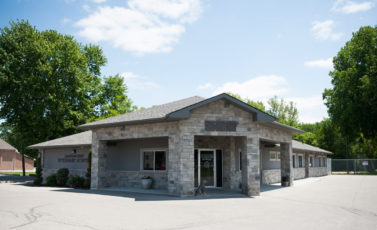A soft lap dog or a roughhousing playmate?

How to choose the right dog for you
Before you select a new dog, there are some big questions you need to ask yourself: How will the dog fit into my lifestyle? How do you envision yourself interacting with the animal…cuddling on the couch or running through the park? How big is myfamily and what is their tolerance for play and care? When you’re researching the breed, consider its temperament, size, and coat as well. Some breeds have traits that may be objectionable in certain circumstances, such as hyper excitability or a tendency to bark. Your veterinarian is a valuable resource and should be consulted before you acquire a pet of any kind.
Breed Selection: Purebred or Mixed Breed
There are 124 recognized breeds, which are grouped into seven categories: hound, working, terrier, toy, sporting, non-sporting, and herding. There are thousands of mixed-breed combinations. Each purebred or mixed-breed dog has a unique personality. Dogs originally bred for a specific purpose tend to retain these characteristics. These dogs may require additional training and patience. Selecting a specific breed does not guarantee a particular behavior, but choosing offspring from animals with desirable temperaments does increase your chances of getting the best pet. Mixed breeds can be as beautiful, intelligent, loving, and companionable as purebreds. Veterinarians, breed-specific books and dog shows are excellent sources of information about individual breed characteristics and needs.
Adopting a puppy? Be ready!
Like a human baby, a puppy can be a great addition to your household, but it also requires a lot of work. Prepare for your puppy’s needs before you adopt! Pick a puppy that is active, friendly, and inquisitive. Avoid the one that appears to be afraid of everything or snarls at people. If you select a timid puppy because you feel sorry for it, be aware that such puppies may be fearful throughout their life. Fearful dogs sometimes become aggressive and bite. Balance is the key, so look for a well-rounded animal. The temperament of a puppy’s relatives may be an indication of its future behavior. If you are getting a puppy from a breeder, ask to see the dog’s parents. Request the names of owners of related dogs. Contact these owners for information about their dogs’ behavior and health patterns. A dog’s training is an important factor in determining future behavior. Healthy puppies learn quickly. Frequent contact with people early in the puppy’s life enhances its adjustment to the human family. Eight to 10 weeks is considered an ideal age to acquaint a puppy with its new home. Do not engage in rough games with your new puppy; this may encourage aggression. If you decide on a puppy be prepared for several months of housebreaking and initial medical expenses.
You can teach an old dog new tricks!
You don’t have to get a puppy to train it the way you like. For some families, the best choice is an older housebroken dog whose temperament, size, coat care, and behavior are established. When adopting or buying an adult dog, inquire about its background. Ask shelter personnel or the breeder what they have observed about its personality. Some animals are given to shelters because of behavioral problems. Many good dogs, however, are abandoned simply because their owners can no longer care for them or no longer want them. Sometimes, breeders will place an older dog in a home when its show or breeding days are over. Many people when moving give dogs away. These animals often make excellent companions. Providing a homeless animal with love and security can win you a loyal companion.
Ask the tough questions. Research. Choose carefully.
There is nothing sadder than a family that returns a dog after a short time because they were not prepared for the animal. Do your homework. Talk to a veterinary professional and adopt a dog that you are willing to commit to for the long-term.



